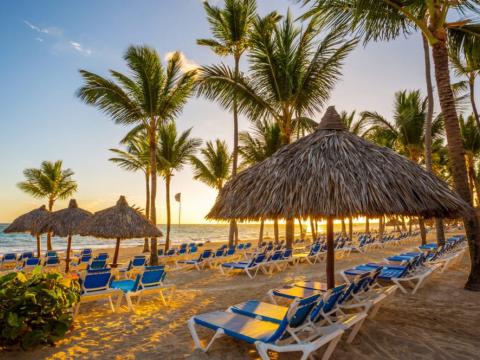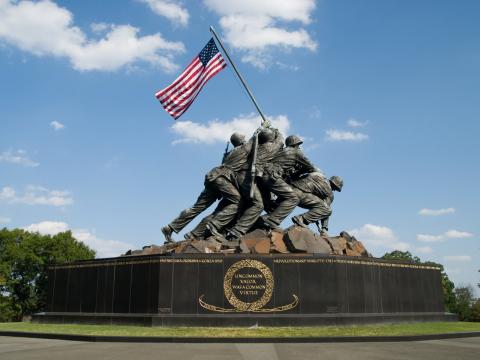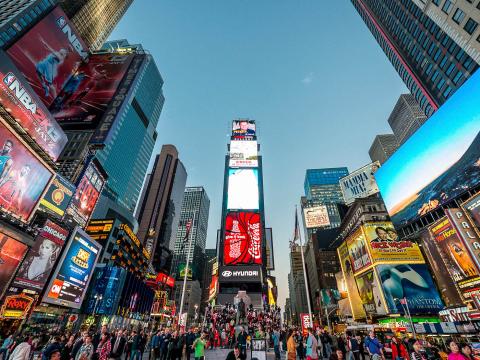North America in a Nutshell
North America is a vast landscape offering a diverse array of sights and experiences, from the snow-capped peaks of the Rocky Mountains, to the deep caverns of the Grand Canyon carved out over millions of years by the Colorado River. It is virtually impossible to take in everything in just one lifetime, and absolutely impossible to see it all in just one trip.
While the history of North American cities is not as ancient as that of Europe, what it lacks in millennia-old structures it makes up for in ethnic diversity and sprawling metropolises, ranging from places like New York City, Los Angeles and Chicago in the United States, to places like Vancouver, Toronto, and Montreal in Canada.
Regardless if you happen to live in this section of the globe, or if you are a traveler coming from elsewhere, North America provides a unique series of opportunities for any traveler.
Brief history
Researchers have long believed that North America first became inhabited by humans around 40,000 to 17,000 years ago when migrants traveled across the Bering Sea. However, recent discoveries indicate human habitation in North America may go back as far as 90,000 years. Communities were established all along North America, from the Mayans and Aztecs of the south to the Inuit in the far north.
Though these groups started out as hunter gatherers, many eventually developed agricultural systems. Groups in the south are the first to have domesticated many crops that are very popular today, like squash and tomatoes. The hunting of big game continued for many groups, but hunting traditions became more sophisticated over time.
Many important cultural advances were made during this period. For instance, the Maya developed a writing system and a calendar system. Despite these advances, indigenous life changed drastically with the arrival of the Europeans.
The Norse were the first Europeans to travel to North America. They founded a settlement in Greenland in 985 (Greenland is part of North America, though this is not widely recognized in popular culture). This settlement survived until the early 1400s.
Greenland also shares some cultural ties with the indigenous people of Canada, but is considered primarily Nordic and has strong Danish ties due to centuries of colonization by Denmark.
The Norse also reached the eastern coast of Canada, but settlements there were smaller and did not last as long. In the 1400s, other Europeans began to travel further, and began reaching the Americas in larger numbers than ever before. Columbus is popularly held responsible for the “discovery” of America, but this notion is highly contested, because the Americas were already home to many different groups of indigenous peoples.
Nonetheless, Europeans treated the Americas as open land for the taking. North America was parceled up by three primary European powers: France, England, and Spain. These colonial powers decimated indigenous cultures and established their own settlements, gradually taking over both continents.
However, relations between American settlers and British rulers became strained. The American Revolution took place between 1765 and 1783, and led to the creation of the United States of America. Spain’s control of Mexico similarly weakened over time. Mexican independence was declared in 1810, which began the Mexican War of Independence. Mexico’s independence was formally recognized by Spain in 1821.
Following independence, the United States grew rapidly with the acquisition of the Louisiana territory from France in 1803. However, conflict between states grew, as some were declared free states, and others remained slave states. This ultimately led to the American Civil War in 1861. Secessionists advocating for the right to expand slavery and establish the Confederate States of America fought the union nationalists, who were loyal to the US constitution. These two groups were split geographically: the North and the South. The North eventually won, the Confederacy collapsed, and slavery was abolished.
Subsequent wars also had a very large impact on North American culture and life. British Canada was immediately part of World War I when it broke out in 1914. Losses were grave, and conscription was eventually put in place. Though the United States did not join the conflict until 1917, it played an important role in peace talks and helped shape the landscape of post-war Europe.
Following the war, the United States experienced a period of prosperity. However, this economic growth and success came to a sudden halt with the Wall Street Crash of 1929. Then once again, both Canada and the United States were embroiled in another war.
Canada became part of World War II before the United States, but this ultimately propelled the United States into a position of world leadership. Mexico also experienced massive economic growth following World War II. The process of decolonization finally started around this time in the Caribbean. Cold War rivalries also began forming, as Russia and the United States faced off through proxy conflicts to establish their dominant positions in world leadership. These conflicts include the Vietnam War, the Korean War, the Cuban missile crisis, among others.
Cold War tensions ended in 1989 with the dissolution of the Soviet Union. Canada, Mexico and United States consolidated their ties and created the world’ largest free trade area by signing the North American Free Trade Agreement in 1994.
However, the optimism that had characterized the 1990s was shattered by the 9/11 attacks on the World Trade center in New York. These attacks led to American and Canadian military intervention in Afghanistan. However, Mexico and Canada were not supportive of the later American invasion of Iraq. The financial crisis of 2008 was another major blow to the United States, as well as Canada and Mexico.
More recently, North America has experienced greater economic growth, but also increasingly divisive politics. Donald Trump, a populist candidate with little political experience, was elected president, marking the beginning of an uncertain and potentially tumultuous period in North American history.
Immigration to the United States and Canada remains a significant attribute of many nations close to the southern border of the US. The Anglophone Caribbean states have witnessed the decline of the British Empire and its influence on the region, and its replacement by the economic influence of Northern America. This is partly due to the relatively small populations of the English-speaking Caribbean countries, and also because many of them now have more people living abroad than those remaining at home.
Regions
North America is made up of three large nations (Canada, the United States, and Mexico), one large island territory (Greenland) as well as a couple dozen island territories in the Caribbean.
The United States
The United States is one of the largest and most ethnically diverse nations on earth. Different regions are highly distinct, and range from the natural wonders of Alaska, to the towering skyscrapers of Manhattan, to the sunny beaches of southern California.
The United States is home to three major mountain ranges: the Appalachians, the Rockies, and the Sierras. The Great Lakes mark the border between Canada and the eastern United States. There span hundreds of miles and are the second largest freshwater bodies in the world.
The western states are are characterized by rugged and arid landscapes. Death Valley in California is one of the hottest places on Earth. Camping and hiking are popular activities in this area.
New England is a popular destination that offers historic cities with spectacular museums, amazing seafood, and beautiful (if chilly) beaches. The Mid-Atlantic offers some of the nation’s largest cities, like New York and Washington D.C. However, the region is also home to some beautiful natural sites, particularly in the fall when foliage changes colors.
The Midwest is the heartland of America, home to picturesque towns, farmland, forests, and industrial cities. Midwesterners are known for their hospitality. Adjacent to the the Midwest, the Great Plains and the Rocky Mountains are known for their vast and expansive landscapes, ranging from open prairies to towering mountainside cliffs. The Rockies are a popular area for skiing, hiking, and other outdoor activities.
The South is popularly celebrated for its hospitality, indulgent and spicy food, and rich musical traditions: blues, jazz, rock, and country. Texas is somewhat of an outlier in the South as the second biggest state in the nation that was once a separate country. It has strong cultural ties to Mexico.
Like Texas, the Southwest is also heavily influenced by Spanish and Mexican culture. Although most of the Southwest is made up of large, empty deserts, there are large and exciting cities like Phoenix and Las Vegas.
On the western coast, California offers cosmopolitan cities, deserts, mediterranean coastlines, beautiful beaches, and the wineries of Napa valley. To the north, the pacific Northwest offers outdoor adventures, beautiful coastlines, and unique cities (if rainy) cities like Portland and Seattle.
Separated from the other states, Alaska and Hawaii are two destinations that require flights to reach. Polar opposites, Alaska offers beautiful arctic landscapes, whereas Hawaii is a volcanic archipelago in the Pacific offering a vacation paradise of beaches, jungles, and waterfalls.
Canada
Canada is the largest country in North America, and the second largest country in the world (second only to Russia). Canada is home to six different regions: the Atlantic Provinces, Quebec, Ontario, the Prairies, British Columbia, and the North.
There is much cultural overlap between the United States and English-speaking Canada due to their mutual colonization by the British. However, Canada also has many French speaking regions due to its history as a French colony.
Quebec is a unique French-speaking region famous for the beautiful city of Montreal, which offers classic architecture, maple syrup and poutine. British Columbia is a good place for hitting the ski slopes of Whistler, and visiting the wineries of Okanagan. Ontario is famous for being home to Canada’s bilingual capital, Ottawa, as well as the Niagara Falls.
The North and the Prairies are very isolated and remote territories that are mostly known for their unique fauna and landscapes.
Mexico
Mexico is a very popular tourist destination due to its beautiful beaches and architectural wonders dating back to the time of the Aztecs and the Mayans. Northern Mexico, particularly in the cities of Monterrey, Tijuana, Ciudad Juárez, and Mexicali, is strongly influenced by the culture and way of life of the United States. Of the aforementioned cities, Monterrey has been regarded as the most Americanized city in Mexico. Traffic between the United States, Canada, and their southern neighbors is high, with many peoples from the south immigrating northwards to seek out a better employment opportunities.
Greenland
Greenland is a self-governing country, but technically still part of Denmark. It tends to attract adventure seekers due to its vast but stark natural landscapes.
The Caribbean
The Caribbean is made up of several territories and nations: The Bahamas, the Turks and Caicos Islands, Cuba, the Cayman islands, the Dominican Republic, Haiti, Jamaica, Puerto Rico, the Leeward Islands (Anguilla, Antigua and Barbuda, the British Virgin Islands, Dominica, Guadeloupe, Montserrat, Saba, Saint-Bathelemy, Sint Eustatius, Saint Kitts and Nevis, and the US Virgin Islands), the Windward Islands (Barbados, Grenada, Martinique, Saint Lucia, Saint Vincent and the Grenadines, Trinidad and Tobago), and the “ABC” Islands (Aruba, Bonaire, and Curacao).
This extensive list does not even cover all territories - some that are not part of the Greater or Lesser Antilles, but are still commonly associated with the Caribbean include Bermuda, Nueva Esparta, Navassa Island, French Guiana, Guyana, and Suriname.
The islands of the Caribbean - particularly the Bahamas, the US Virgin Islands, Turks and Caicos Islands - are popular resort vacation destinations, particularly for people on their honeymoon or who are retired. The Cayman Islands are a popular offshore financial centre. Cuba is the largest Caribbean island, but has remained isolated and closed off for many years. It has recently begun the process of opening up economically, inviting visitors to discover and explore Cuban culture in a way that has not been permitted for decades.
Living
Most Americans and Canadians are English speakers, though Spanish is becoming increasingly prevalent as a language. English is also spoken by people in many Caribbean nations. Most of Central American, Mexico, and parts of the southern states are Spanish speaking areas. In Canada, French is also popularly spoken (particularly in Quebec). French is also a common language in some parts of the Caribbean. Danish is spoken in Greenland, and Dutch is spoken in islands in the southern Caribbean.
The US dollar is accepted in most of Central America and the Caribbean, though local currencies must be used in Cuba and Canada. Visa and MasterCard are accepted nearly everywhere in North America. Sales taxes are charged in the United States, although rates vary from place to place.
Regulations on alcohol are somewhat stricter in North American than they are elsewhere. Drinking in public in the United States is illegal, save in New Orleans and Las Vegas. Drinking ages are 21 in the United States, 18 in Mexico, and 18 to 19 in Canada.
Getting Around
As a continent primarily surrounded by oceans, North America is primarily reached by air. International airports exist across major cities. They are generally safe, though security measures at American airports tend to be strict. Removing shoes, full body scanners, and limitations on containers with fluids are common demands of the American security apparatus.
Visits that include multiple regions are best facilitated by air travel, as distances can be extensive. However, car travel is the most widely used mode of transportation in the United States and road trips are popular ways of exploring new areas or even traversing great distances. Roads tend to be well maintained in Canada, the United States and Mexico. In and between large cities, buses or railways are also popular and reliable modes of transport.
Economy
North America's GDP per capita was evaluated in October 2016 by the International Monetary Fund (IMF) to be $41,830, making it the richest continent in the world, followed by Oceania.
Canada, Mexico, and the United States have significant and multifaceted economic systems. The United States has the largest economy of all three countries and in the world. In 2016, the U.S. had an estimated per capita gross domestic product (PPP) of $57,466 according to the World Bank, and is the most technologically developed economy of the three. The United States' services sector comprises 76.7% of the country's GDP (estimated in 2010), industry comprises 22.2% and agriculture comprises 1.2%. The U.S. economy is also the fastest growing economy in North America and the Americas as a whole, with the highest GDP per capita in the Americas as well.
Canada shows significant growth in the sectors of services, mining and manufacturing. Canada's per capita GDP (PPP) was estimated at $44,656 and it had the 11th largest GDP (nominal) in 2014. Canada's services sector comprises 78% of the country's GDP (estimated in 2010), industry comprises 20% and agriculture comprises 2%. Mexico has a per capita GDP (PPP) of $16,111 and as of 2014 is the 15th largest GDP (nominal) in the world. Being a newly industrialized country, Mexico maintains both modern and outdated industrial and agricultural facilities and operations. Its main sources of income are oil, industrial exports, manufactured goods, electronics, heavy industry, automobiles, construction, food, banking and financial services.
Tips
Most of Canada and the United States is generally safe, although this can depend on specific neighborhoods. Be aware of what areas are considered safe and which are not, particularly in major cities. Most - though not all - Caribbean islands are safe. However, many Central Americans countries have high crime rates and should only be visited cautiously. Tourist resorts tend to be the safest places in many of these countries.
Canada and the United States divides its population into five "tribes" - Whites, Blacks, Hispanics, Asians/Pacific Islanders and Native Americans. These are arbitrary definitions for all intents and purposes, but people seem to take them very seriously and they form their personal identities based on those.
Calling 911 will connect travelers with emergency dispatchers should emergency services be required.
Be cautious of traveling to the south coast and the Caribbean during the hurricane season, which lasts from June to November, roughly. Conversely, travelers to the North should be aware that severe blizzards from December to March can interrupt travel plans.
Last modified on 04/30/2021 - 08:26
Go Further!
Currently there are no articles about North America.
Currently there are no trip reports about North America.
Currently there are no photo of North America.
Currently there are no videos of North America.









